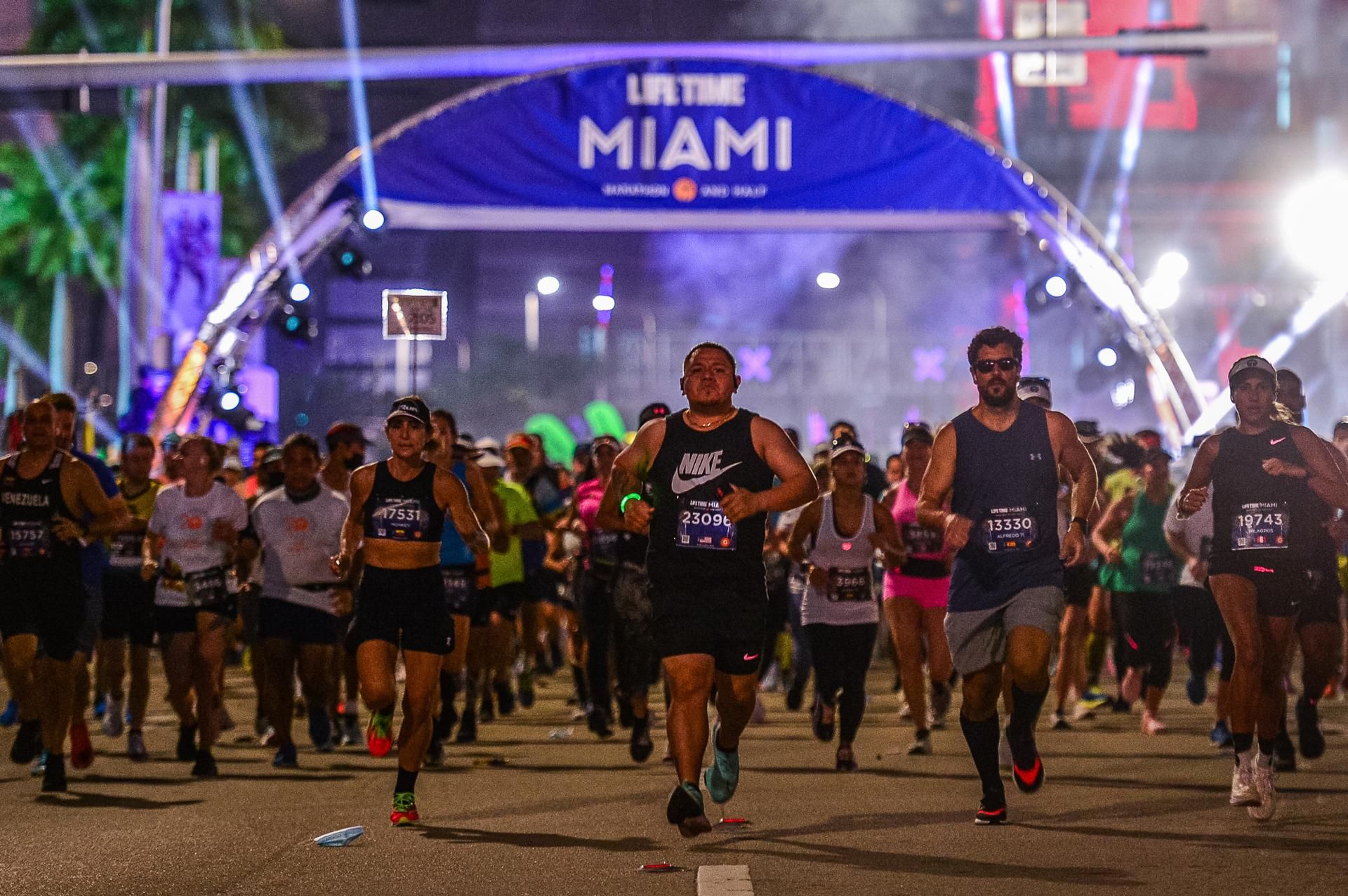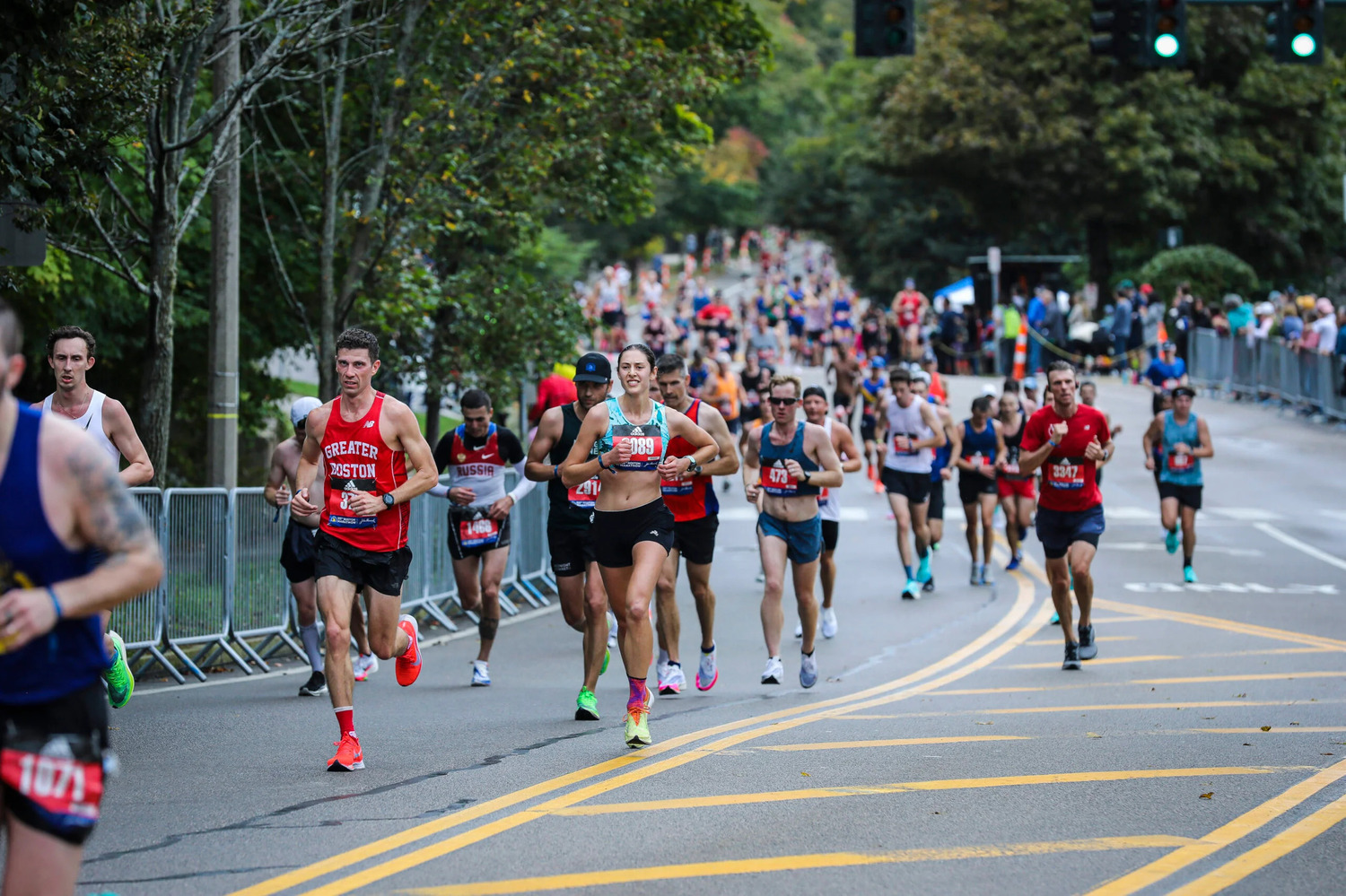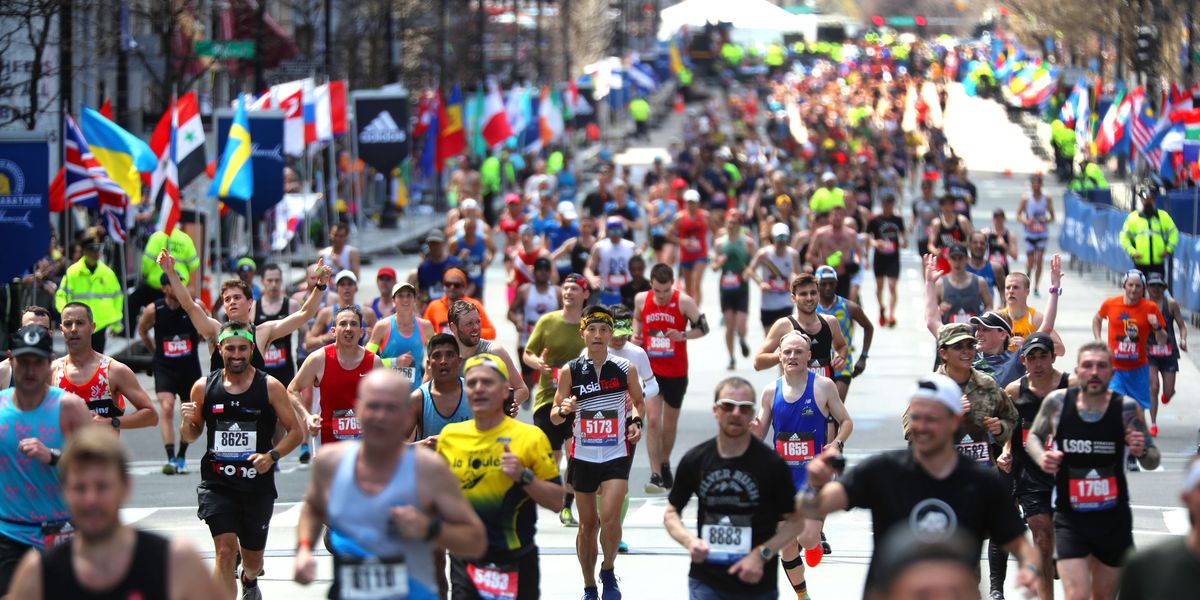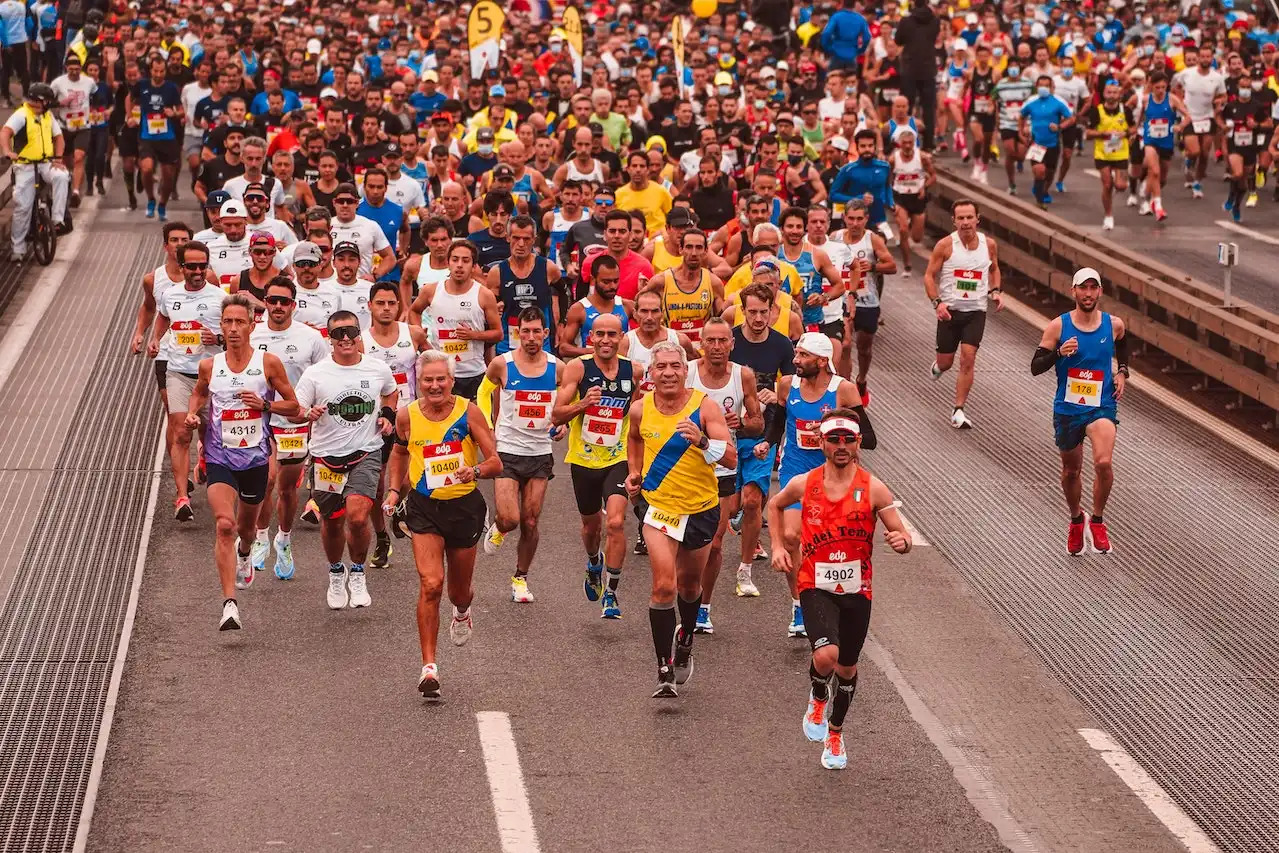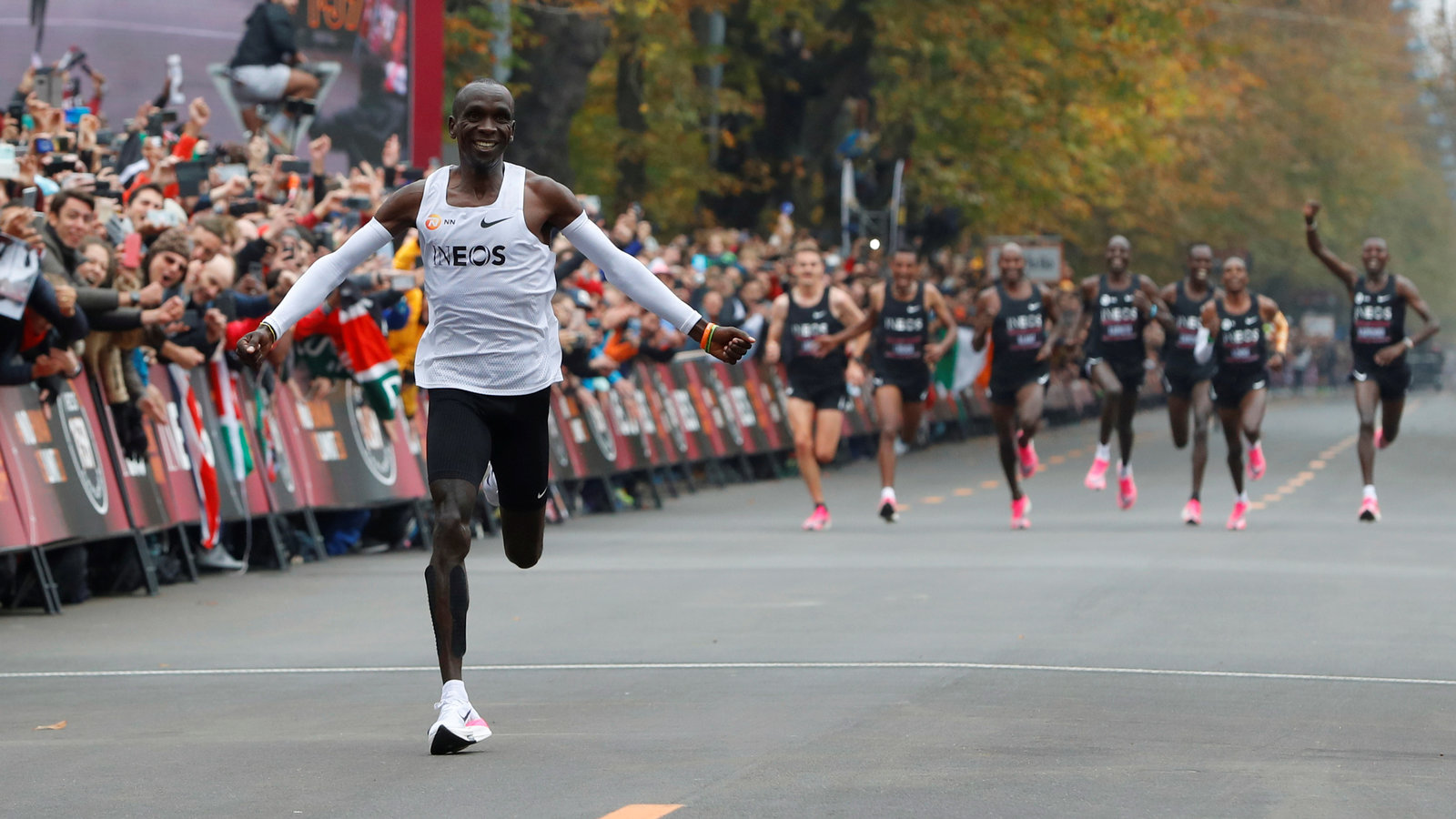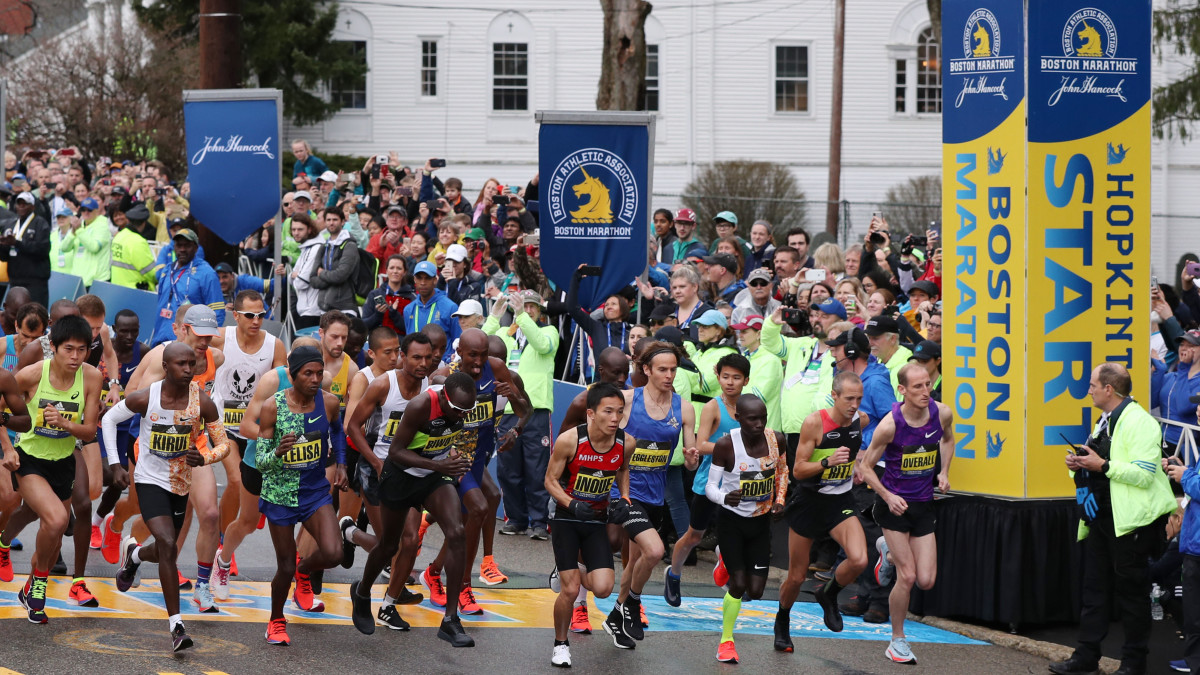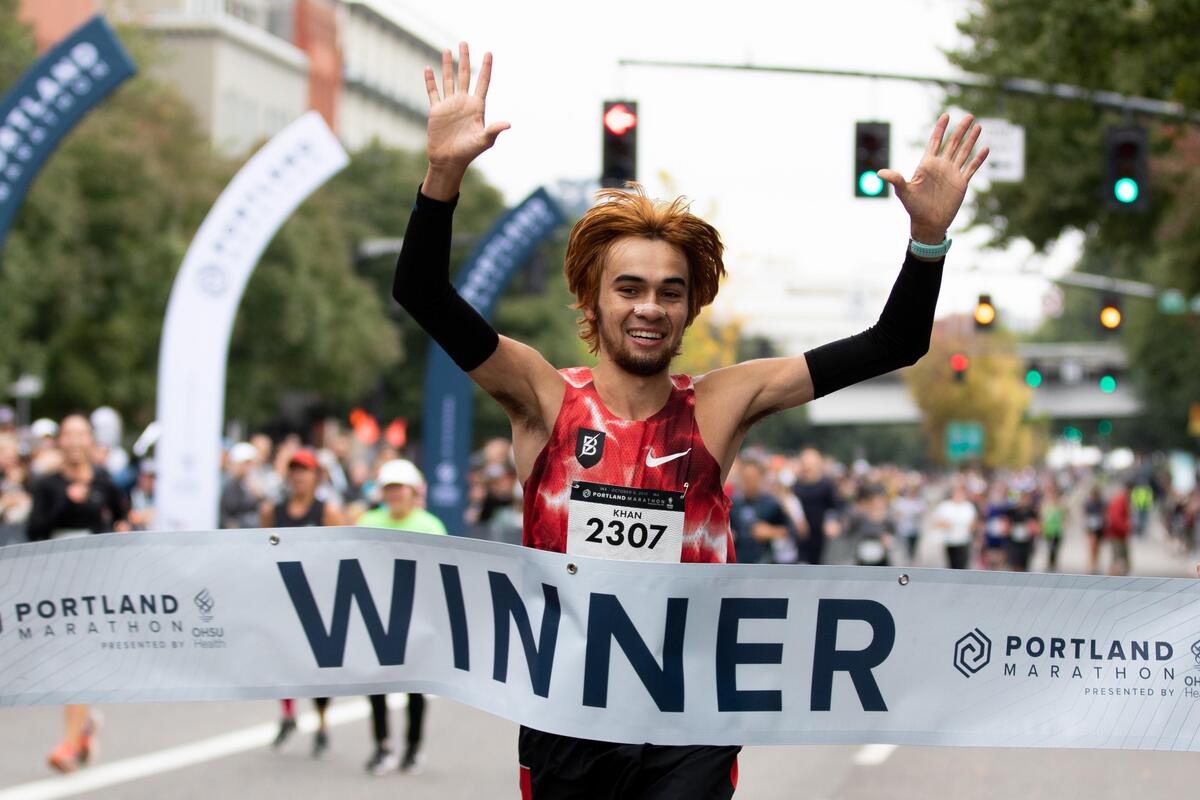

Featured
Who Won The Marathon
Modified: January 2, 2024
Discover who won the marathon in this featured article, filled with thrilling moments and jaw-dropping accomplishments.
Introduction
Welcome to the thrilling world of marathon racing! The marathon, a long-distance race of 26.2 miles (42.195 kilometers), has captivated audiences for years with its blend of physical endurance, strategic planning, and unpredictable outcomes. Whether you are a runner, a sports enthusiast, or simply curious about this historic event, join us as we explore the exhilarating journey of the marathon.
The marathon has a rich historical background that dates back to ancient Greece. Legend has it that the very first marathon was run by a messenger named Pheidippides, who raced from the city of Marathon to Athens to deliver news of the Greek victory over the Persians. Today, marathon races are held in various cities around the world, attracting elite athletes, passionate amateurs, and enthusiastic spectators.
Months of rigorous training and meticulous preparations precede the marathon race. Runners focus on building endurance, improving speed, and developing mental fortitude to tackle the grueling distance. They fine-tune their diets, establish strict sleep regimes, and create detailed training schedules to optimize their performance on race day. The dedication and commitment required are unparalleled.
On the race day itself, anticipation fills the air as runners line up at the starting line, nerves tingling with excitement. Thousands of participants from diverse backgrounds gather to embark on this monumental challenge. Spectators line the streets, providing rousing support and encouragement as the runners set off on their epic journey.
In every marathon, there are leading contenders who have trained meticulously and are vying for the top spot. These athletes are experts at pacing themselves, conserving energy, and strategically positioning themselves within the pack. However, the marathon is known for its twists and turns, often surprising both the runners and the spectators.
Throughout the race, competitors strategize, make split-second decisions, and adapt to the ever-changing race dynamics. The thrill of the marathon lies not only in the physical exertion but also in the mental challenges that the runners face along the way. It is a true test of resilience, determination, and the ability to overcome obstacles.
The dramatic final stretch of the marathon is where pure adrenaline kicks in. Runners push their bodies to the limit, summoning every ounce of strength for a final sprint to the finish line. The cheers of the crowd echo in their ears as they hurdle towards victory. Only one person can emerge as the winner, their triumphant journey immortalized in history.
This article will take you on a captivating journey through the world of marathon racing, exploring the intense competition, surprising developments, and the ultimate triumph of the winner. Join us as we delve into the heart-stopping moments and unravel the mysteries behind who won the marathon.
Historical background of the marathon
The marathon has a storied history that can be traced back to ancient Greece, where it all began. The roots of the marathon lie in the legendary tale of Pheidippides, a Greek messenger who played a pivotal role in the Battle of Marathon in 490 BCE. According to the ancient historian Herodotus, Pheidippides was entrusted with the important task of delivering the news of the Greek victory over the Persians to Athens, a distance of approximately 26.2 miles.
Legend has it that Pheidippides embarked on an arduous journey, running with all his might to complete his mission. He covered the grueling distance from the fields of Marathon to the city of Athens, desperate to convey the momentous news. Upon reaching his destination, Pheidippides exclaimed, “Joy to you, we have won!” before collapsing from exhaustion and, sadly, passing away.
This heroic feat inspired the modern marathon race, which was first introduced as an Olympic event during the inaugural modern Olympic Games held in Athens in 1896. The race route followed the legendary footsteps of Pheidippides, starting in the city of Marathon and finishing in the Panathenaic Stadium in Athens.
Since then, the marathon has become synonymous with endurance, determination, and the indomitable human spirit. It captures the essence of pushing oneself to the limit, both physically and mentally, and conquering challenges that seem insurmountable.
The marathon’s popularity continued to grow, and in 1908, it experienced a significant historical moment. During the London Olympic Games that year, the race distance was increased to 26.2 miles to accommodate the royal family’s request of starting the race at Windsor Castle and finishing in front of the royal box at the Olympic Stadium.
The marathon quickly captured the imagination of athletes and spectators worldwide, and it soon became a symbol of endurance and achievement. Cities around the globe started hosting their own marathons, attracting runners from diverse backgrounds who sought to test their limits and participate in this iconic event.
Today, marathon races are organized in various locations around the world, each with its unique course and atmosphere. The Boston Marathon, which began in 1897, is one of the most prestigious marathons and holds a special place in the hearts of runners worldwide. The New York City Marathon, Chicago Marathon, Berlin Marathon, London Marathon, and Tokyo Marathon are among the other major marathons that attract elite runners and enthusiastic participants from across the globe.
From its humble origins in ancient Greece to the grand international events we witness today, the marathon has evolved into a true testament of human strength and perseverance. The historical significance of the marathon, rooted in myth and legend, continues to inspire generations of athletes to push beyond their limits and chase their dreams.
Training and preparations
The preparation for a marathon is a rigorous and disciplined journey that begins months in advance. Runners commit themselves to a demanding training program designed to build endurance, improve speed, and develop mental fortitude.
Training for a marathon involves a careful balance of different elements, including long runs, speed workouts, tempo runs, and recovery runs. Long runs form the foundation of marathon training, gradually increasing in distance over time. These runs help runners build the necessary endurance to tackle the 26.2-mile distance. Speed workouts, such as intervals and hill repeats, focus on improving overall pace and increasing the runner’s capacity to maintain a faster speed.
Aside from the physical training, runners also pay close attention to their diet and nutrition. Fueling the body with the right nutrients is crucial for optimal performance. They ensure a balanced intake of carbohydrates, proteins, and healthy fats, while also staying properly hydrated throughout their training. Many runners work with nutritionists or dieticians to develop a personalized nutrition plan that supports their training goals.
Adequate rest and recovery are equally important during marathon training. Rest days are scheduled to allow the body to recover and repair itself. Runners often incorporate cross-training activities, such as cycling or swimming, to provide a break from running while still maintaining aerobic fitness. Additionally, stretching, foam rolling, and regular massages help prevent injuries and aid in recovery.
Mental preparation is also a crucial aspect of marathon training. The mental challenges of a marathon can be just as demanding as the physical ones. Visualization techniques, positive affirmations, and setting achievable goals help runners stay focused and motivated throughout their training. Mental toughness and resilience are tested during the long training runs, mirroring the mental strength needed to persevere during the actual marathon.
In the weeks leading up to the marathon, runners taper their training, gradually reducing the overall volume of their runs while maintaining intensity. Tapering allows the body to recover fully before the race, ensuring that runners are fresh and ready for peak performance on race day.
In addition to training, runners also plan and prepare for logistical aspects of the race. This includes registering for the marathon, booking travel and accommodations if necessary, and familiarizing themselves with the race course. Many runners attend race expos, where they collect their bib numbers, timing chips, and explore the array of running-related products and services available.
Preparations for race day also involve selecting appropriate race attire, including comfortable running shoes, moisture-wicking clothing, and other gear such as hydration belts or energy gels. Runners may experiment with different equipment and clothing during their training to ensure everything is comfortable and well-suited to their needs.
The meticulous training and preparations are essential to equip runners with the physical and mental stamina required to conquer the marathon challenge. When race day finally arrives, the months of dedication, effort, and planning culminate in a single extraordinary moment—a chance for runners to showcase their hard-earned fitness and determination.
The race day
After months of training and preparations, the much-anticipated race day finally arrives. The atmosphere is electrifying as runners from all walks of life gather at the starting line, nerves tingling with excitement and anticipation. Spectators line the streets, their cheers and encouragement adding to the palpable energy in the air.
As the starting horn sounds, the runners set off on their epic journey. The first few miles are a flurry of activity as the pack finds its rhythm and runners settle into their desired pace. The race routes take participants through a variety of landscapes, from bustling city streets to peaceful suburban neighborhoods and serene countryside paths.
Water stations and aid stations are strategically placed along the route to provide runners with hydration and fuel. These stations act as pit stops, offering water, electrolyte drinks, energy gels, bananas, and other snacks to help runners replenish their energy and stay hydrated throughout the race. Volunteers and spectators cheer for the runners, offering words of encouragement and support.
The marathon is not just a physical test; it is a mental challenge as well. Runners must navigate the highs and lows, battling fatigue, self-doubt, and the temptation to give in. In these moments, the mental conditioning acquired during training becomes crucial. Runners employ various strategies to stay motivated—listening to uplifting music, focusing on their breathing, or visualizing themselves crossing the finish line.
The midway point of the race is often a critical psychological milestone for many runners. It signifies that they have conquered half the distance, inspiring them to push on and maintain their pace. The crowds grow denser as runners approach the latter stages of the race, their cheers providing an extra boost of adrenaline.
As the finish line draws nearer, a mix of exhaustion and determination takes over. Runners call upon their deepest reserves of strength as they approach the final miles. The cheers of the crowd propel them forward, and a sense of accomplishment and anticipation fuels their resolve.
In these last moments of the race, the determination to finish strong takes over. Runners pick up their pace, summoning every ounce of energy for a final sprint towards the finish line. The sight of the finish line arch and the roaring cheers of the crowd serve as a powerful motivation to give their all in those final strides.
Crossing the finish line is an indescribable moment of triumph for any marathon runner. The months of training, the early morning runs, the sacrifices—it all culminates in this one glorious moment. Emotions run high as runners raise their arms in celebration, smiles lighting up their weary faces.
Whether it’s a personal best, a sense of accomplishment, or simply the satisfaction of completing the challenge, every runner experiences their unique journey on race day. The marathon, as much as it is a physical race against the clock, is also a race against oneself—a test of perseverance, resilience, and the power of the human spirit.
As the runners cross the finish line and embrace the feeling of accomplishment, their dedication and determination serve as an inspiration to all those who witness their incredible feat. The race day is a testament to the enduring spirit of the marathon and a celebration of the human potential to conquer challenges and achieve extraordinary goals.
Leading contenders
In every marathon, there are elite athletes who emerge as leading contenders, highly skilled individuals who have dedicated their lives to the pursuit of excellence in the sport of long-distance running. These athletes possess exceptional speed, endurance, and a strategic approach to competing in marathons.
The field of leading contenders is often a mix of seasoned veterans and emerging talents. Seasoned veterans bring years of experience and a deep understanding of the nuances of marathon racing. They have mastered the art of pacing themselves, conserving energy, and making calculated moves at critical points in the race. Their mental toughness and wisdom gained from previous races make them formidable opponents.
On the other hand, emerging talents bring new energy and fresh perspectives to the marathon. They often have natural athleticism and a hunger to make their mark in the world of distance running. Their youthful exuberance and fearlessness can sometimes yield surprising results, as they may take risks or employ unconventional strategies in their quest for victory.
Leading contenders often hail from different parts of the world, representing a diverse range of nationalities and backgrounds. Global powerhouses like Kenya and Ethiopia have a long-standing dominance in the marathon, producing world-class athletes who consistently rank among the best in the sport. Other countries like the United States, Japan, and Great Britain also have a strong presence in the elite field, with talented runners competing at the highest level.
Prior to the race, the leading contenders are often closely watched and analyzed by fans, experts, and fellow athletes alike. Their recent performances, training regimens, and competition records are scrutinized to gauge their form and potential in the upcoming race. Media outlets predict and discuss the chances of various contenders, adding an extra layer of anticipation and excitement.
One unique aspect of marathon racing is that even among the leading contenders, there are different styles and approaches to the race. Some runners prefer to set a steady pace from the start, relying on their consistent endurance to outlast their competitors. Others adopt a more aggressive strategy, attempting to break away from the pack early on and establish a commanding lead.
The course itself can also play a significant role in determining the strategies employed by leading contenders. A hilly course might favor runners with strong ascending and descending skills, while a flat and fast course may attract speedsters looking to set new records. Each contender must adapt their race plan to the specific challenges and opportunities presented by the course they are racing on.
As the marathon unfolds, the leading contenders vie for the top spots, often jockeying for position and closely monitoring their competitors. The dynamics of the race can change rapidly, as surges in pace, pacemaker strategy, and unexpected moves by individual runners can create dramatic shifts in the positioning of the contenders.
Ultimately, the marathon is a race of uncertainty and unpredictability. The leading contenders bring their impressive physical prowess, abundant talent, and strategic acumen to the starting line, seeking to rise above their peers and claim victory. And it is within the race itself, amidst the challenges, drama, and unyielding spirit, that the true champions emerge.
Unexpected turns and surprises
While marathon races are often meticulously planned and strategized, they are also renowned for their unpredictability. The course unfolds with twists and turns, and unexpected events can shape the outcome of the race. These unforeseen factors add an element of excitement and intrigue, keeping both runners and spectators on the edge of their seats.
One of the most significant factors that can disrupt the expected race dynamics is the weather. Mother Nature has the power to throw curveballs at runners, challenging their physical and mental resilience. Extreme heat or cold, strong winds, rain, or even unexpected changes in weather conditions can greatly impact performance and race strategies. Runners must adapt quickly, adjust their pacing, and regulate their hydration and fueling accordingly.
Another unexpected element in a marathon is the dynamics among the runners themselves. At times, unexpected alliances form during the race. Runners may choose to work together, taking turns leading the pack to conserve energy and gain a competitive advantage. These alliances can be short-lived or enduring, and they can influence the outcome of the race in unforeseen ways.
Sometimes, an underdog emerges from the pack, defying expectations and challenging the leading contenders. These dark horses may have flown under the radar during the pre-race analysis, but they possess the ability to surprise everyone with their grit and determination. Their breakthrough performances inspire awe and showcase the unpredictable nature of marathon racing.
Course conditions can also provide surprises. Whether it’s unexpected uphill sections, downhill descents, or challenging terrain, the nature of the course can impact runners’ strategies and overall performance. A course that is different from what runners had anticipated can force them to make quick adjustments and showcase their adaptability.
Marathon races often serve as platforms for personal triumphs and inspiring stories. Some runners may be running for a cause, raising awareness or funds for a charity or a meaningful purpose. Their presence and determination can bring added emotions and unexpected turns to the race, as their personal stories touch the hearts of both the spectators and their fellow runners.
Random circumstances can also disrupt the anticipated outcome of a marathon. A sudden cramp, a mishap with nutrition or hydration, or even a stumble can dramatically alter a runner’s performance. These unforeseen setbacks require quick thinking and adaptability, putting runners to the test both physically and mentally.
It is the element of surprise, the unexpected turns and twists, that make marathon racing so enthralling. The race becomes a battle of resilience, adaptability, and sheer determination. No matter how meticulously planned and executed, there will always be surprises that challenge the leading contenders and provide opportunities for those who may have been overlooked.
The unexpected turns and surprises in a marathon showcase the true essence of the sport—a test of endurance and perseverance in the face of uncertainty. It is these moments of unpredictability that create the magic of marathon racing, fueling its beauty and captivating the hearts and minds of both the runners and the spectators.
Race dynamics and strategies
Every marathon race is a complex and dynamic event, with race dynamics that constantly evolve throughout the course. As runners navigate the distance, they employ various strategies to optimize their performance, outwit their competitors, and adapt to the ever-changing conditions.
Race dynamics are influenced by factors such as the leading contenders’ strategies, the course layout, weather conditions, and the overall competitiveness of the field. The initial stages of a marathon often involve the runners finding their rhythm and settling into their desired pace. Some may choose to start conservatively, pacing themselves for the long haul, while others may strive to establish an early lead and dictate the race’s tempo.
Pacemakers also play a significant role in race dynamics. These designated runners set the pace for the leading contenders, allowing them to conserve energy by following a steady and controlled rhythm. Pacemakers strategically adjust their speed according to the race plan, aiming to create optimal conditions for the top contenders to achieve their desired finishing time.
As the race progresses, the dynamics can shift dramatically. Surges in pace, breakaways, and strategic moves become common. Runners might choose to increase their speed to break away from the pack and gain a competitive edge. Such tactics are employed to test the competitors’ limits and potentially weaken the resolve of their opponents.
Strategic positioning is pivotal in marathon racing. Runners often try to position themselves tactically within the pack, using the slipstream of other runners to reduce wind resistance and save valuable energy. They must constantly assess the movements of their competitors, striving to stay within striking distance of the leaders without expending excessive effort too early in the race.
The choice of refueling and hydration strategies in a marathon race is another critical factor. Runners need to carefully time their intake of water, sports drinks, and energy gels to maintain their energy levels and avoid dehydration or fatigue. The location and frequency of aid stations, as well as the nutritional plans formulated during training, dictate these crucial decisions.
Mental fortitude and focus are essential components of race dynamics. Runners must stay mentally engaged, pushing through physical discomfort and potential setbacks. Maintaining a positive mindset, effectively handling negative thoughts, and employing visualization techniques can make a significant difference in overcoming the mental challenges of a marathon race.
Adaptability is key in responding to unexpected race dynamics. Runners must be prepared to adjust their strategies on the fly, responding to changes in weather, course conditions, or the tactics of their competitors. Flexibility and the ability to make quick decisions can give runners an edge in navigating the ever-evolving race dynamics.
The final miles of a marathon often witness a culmination of the race dynamics and strategies employed by the runners. It becomes a battle of physical and mental strength, with competitors vying for the best positioning and summoning every ounce of energy for a sprint to the finish line.
In marathon racing, understanding and adapting to race dynamics and deploying effective strategies are crucial to achieving optimal performance. The ability to read the race, make timely decisions, and capitalize on opportunities requires a combination of experience, confidence, and an unwavering competitive spirit.
Final stretch and sprint to the finish
The final stretch of a marathon is a culmination of months of training, mental fortitude, and physical endurance. As runners approach the last miles of the race, the intensity reaches its peak as they prepare for the ultimate push towards the finish line.
As the finish line looms ahead, adrenaline courses through the veins of the runners. Fatigue may have set in, but the anticipation of completing the challenging journey fuels their determination. Every step brings them closer to achieving their goal, whether it is a personal best, a sense of accomplishment, or simply the drive to finish the race.
In the closing miles of the marathon, the atmosphere is electric. Spectators line the streets, cheering wildly and encouraging the runners. Their support becomes a vital source of motivation, urging the participants to dig deep and find that extra burst of energy.
The final stretch of a marathon often marks the transition from endurance to speed. Runners shift gears, summoning all their remaining strength for a final sprint to the finish line. The finish line arch stands as a beacon, a symbol of triumph and achievement.
This sprint to the finish requires mental and physical resilience. It is a test of the runner’s ability to overcome fatigue, pain, and self-doubt. With each stride, they push their bodies to the limit, propelled by a mix of determination, adrenaline, and sheer willpower.
The cheers of the crowd grow louder as the runners approach the finish line. The spectators become their fuel, their applause fueling the runners’ spirit and igniting a surge of energy. In these final moments, the exhaustion and pain become secondary to the desire for victory.
The sprint to the finish line often leads to intense battles between competitors who have been neck and neck throughout the race. It becomes a showdown of tenacity, as runners strive to outpace their rivals to secure a higher placement. In these adrenaline-fueled bursts, split-second decisions and strategic positioning can make all the difference.
The finish line represents the culmination of an extraordinary physical and mental feat. The exhilaration felt as runners cross that threshold is immeasurable. Arms raised in triumph, faces radiating joy and exhaustion, they have conquered the marathon, achieving what few others have dared to attempt.
For spectators, witnessing the final stretch and the sprint to the finish is a thrilling experience. It is a celebration of human strength and perseverance, a reminder that the human spirit knows no bounds. It is a testament to the power of determination and the resilience of the human body.
Regardless of the finishing time or placement, every runner who reaches the finish line can bask in the glory of their achievement. The final stretch and sprint to the finish embody the essence of marathon racing—the culmination of months of training, the triumph over physical and mental challenges, and the sweet taste of success.
As the cheers of the crowd echo in their ears, runners embrace the euphoria of achievement, knowing that they have left an indelible mark on the marathon’s storied history. The final stretch and sprint to the finish become a testament to the extraordinary strength and determination that lies within every marathon runner.
The winner’s announcement and celebration
After an exhilarating display of athleticism, perseverance, and strategic maneuvering, the moment finally arrives when the winner of the marathon is announced. The anticipation builds as the race officials review the data, analyze the finishing times, and verify each runner’s performance.
With eager anticipation, the winner’s name is declared, and the crowd erupts in thunderous applause. Flashing cameras capture the victorious moment, immortalizing the runner’s achievement in images that will be shared and cherished for years to come.
The winner’s announcement is often accompanied by a mix of emotions. Triumph, elation, and a sense of fulfillment wash over the victor as they take their place on the podium, receiving the coveted prize that symbolizes their victory. They have conquered the marathon, surpassing all other competitors and etching their name into the annals of marathon history.
The celebration that follows is a joyous display of accomplishment. The winner’s teammates, coaches, and supporters rush forward, enveloping them in embraces and accolades. It is a proud moment not only for the individual winner but also for the entire support system that contributed to their success.
Amidst the congratulatory embraces and cheers, the winner embraces the significance of their achievement. They reflect on the months of training, the sacrifices made, and the obstacles overcome. It is a humbling moment, a realization that their hard work and dedication have paid off in the most glorious way possible.
As the winner takes the ceremonial victory lap, the jubilant cheers from the crowd resonate through the air. The victorious runner waves and smiles, acknowledging the immense support and adulation from spectators who appreciate the tremendous effort and skill that led to their triumph.
Media outlets, both national and international, eagerly await the opportunity to interview the winner. Microphones thrust toward them as journalists seek insight into their remarkable journey. In these interviews, the winner’s humility, gratitude, and determination shine through as they share their thoughts and emotions with the world.
The celebration continues long after the finish line. Sponsorship deals and endorsements may become part of the winner’s future, as their victory brings recognition and opportunities. The winner becomes an inspiration to aspiring runners, with their story motivating others to chase their own dreams and push their limits.
The victory is also a moment of reflection and gratitude. The winner acknowledges the efforts of their competitors, recognizing the fierce competition that pushed them to their limits. They express gratitude to their support team, including coaches, trainers, family, and friends, for standing by them every step of the way.
The celebration extends beyond the individual winner to the broader running community. The victory showcases the potential of the human spirit and inspires others to aim for greatness. It becomes a testament to the power of hard work, discipline, and unwavering dedication.
While the winner’s celebration is a significant milestone, they understand that their journey does not end here. The victory serves as a stepping stone toward new goals and challenges, motivating them to continue pushing the boundaries of their potential.
The winner’s announcement and celebration represent the pinnacle of marathon achievement. It is a triumphant moment that encapsulates the essence of the marathon—perseverance in the face of adversity, the pursuit of excellence, and the celebration of human potential. Through their victory, the winner etches their name in marathon history and inspires others to dream big, run far, and believe in the power of their own capabilities.
Post-race interviews and reactions
Once the excitement of the marathon has subsided and the winners have been crowned, a flurry of post-race interviews and reactions ensue. The media clamors to speak with the top finishers, capturing their immediate thoughts and emotions as they reflect on their performance.
Post-race interviews offer a unique glimpse into the minds of the athletes, providing a platform for them to share their experiences, insights, and the range of emotions they encountered during the marathon. The interviews allow the audience to connect with the runners on a deeper level, gaining a deeper understanding of the physical and mental challenges they faced throughout the race.
The winners often articulate a mix of relief, joy, and a profound sense of accomplishment. They express gratitude for their support team, recognizing the instrumental role they played in their victory. The interviews reveal the intense dedication and sacrifices required to excel in the marathon, inspiring others to pursue their own dreams and goals.
Post-race interviews also provide an opportunity for runners to reflect on the race dynamics, unexpected turn of events, and the strategies they employed. They analyze their performance, highlighting areas of strength and areas that require further improvement. Their insights offer valuable lessons for fellow runners and aspiring athletes.
Beyond the winners, the interviews also give a voice to other participants, both elite and amateur. Their stories are just as compelling, as they too have overcome personal obstacles and pushed beyond their limits to complete the marathon. Their reflections capture the essence of perseverance, courage, and the joy of crossing the finish line.
The media coverage serves as a platform not only for the runners but also for the race organizers, sponsors, and local communities. Interviews with race officials shed light on the intricacies of organizing a marathon, the challenges faced, and the pride they feel in hosting such a prestigious event. The interviews capture the joy and pride that the host city or town feels in successfully executing the marathon.
Post-race reactions extend beyond the interviews, as social media platforms become abuzz with posts and tags from runners who have completed the marathon. Participants share their experiences, posting photos, recounting memorable moments, and expressing their sense of pride and accomplishment. Others offer words of encouragement and admiration for their fellow runners, creating a sense of community and camaraderie.
For the running community at large, the post-race interviews and reactions serve as a source of motivation and inspiration. They provide a glimpse into the raw and unfiltered emotions experienced by the runners, making the marathon experience relatable and attainable for others. Stories of triumph, resilience, and personal growth permeate the discourse, igniting a hunger for new challenges and pushing the boundaries of what is thought possible.
Post-race interviews and reactions capture the essence of the marathon beyond the physical act of running. They celebrate the triumphs, the inner narratives, and the personal victories that define the marathon experience. They reaffirm the power of determination, resilience, and unwavering belief in oneself that resonates far beyond the finish line.
Analysis of the winning performance
The winning performance in a marathon is a remarkable display of athleticism, strategy, and perseverance. It is a culmination of months of dedicated training, mental fortitude, and precise execution. Analyzing the factors that contributed to the winner’s success provides valuable insights into the intricacies of marathon racing.
One key aspect of the winning performance is the physical preparation of the victorious runner. The winner has likely followed a well-structured training plan, designed to build endurance, improve speed, and enhance overall fitness. Consistency and discipline in training play a pivotal role in enhancing performance, allowing the runner to withstand the demanding nature of the marathon distance.
Strategic race execution plays a crucial role in the winning performance. The ability to assess the competition, adapt to changing race dynamics, and make calculated decisions is a skill possessed by the top marathoners. The winner chooses the right moments to surge, maintain pace, or conserve energy, responding to the movements and strategies of their opponents. A finely tuned sense of pacing, combined with split-second decision-making, is essential for a successful race.
The mental strength of the winner is another determining factor. The ability to stay focused, block out distractions, and overcome pain and fatigue is vital in marathon racing. The winner’s mental resilience allows them to maintain a strong mindset throughout the entire race, pushing through difficult moments and summoning the determination required to reach the finish line first.
Course knowledge and preparation contribute significantly to the winning performance. The winner is likely familiar with the intricacies of the race course, including challenging terrain, elevation changes, or sections that require specific strategies. This deep understanding allows the winner to plan and execute strategies accordingly, optimizing performance and gaining a competitive advantage.
Nutrition and hydration are critical to sustaining performance over the duration of the marathon. The winner has likely perfected their fueling strategy, maintaining optimal energy levels and hydration throughout the race. Effective nutrition planning ensures the body receives the necessary nutrients to delay fatigue and maintain performance in the later stages of the race.
The winner’s ability to adapt to unexpected circumstances plays a role in their performance. Marathons can be unpredictable, with weather conditions, race dynamics, and unforeseen obstacles presenting challenges. The winner’s ability to adjust their strategy on the fly, make quick decisions, and remain composed in unexpected situations can make a significant difference in securing victory.
Team support is another factor influencing the winning performance in some cases. Elite runners may have a team of coaches, trainers, and pacemakers who provide guidance, support, and assistance during the race. These team members contribute to the tactical planning and offer critical feedback and encouragement throughout the race, maximizing the winner’s potential.
Ultimately, the winning performance in a marathon is a combination of physical ability, mental strength, strategic awareness, and meticulous preparation. It showcases the culmination of all the hard work, sacrifices, and dedication that the champion has invested into their training. Analyzing the winning performance not only celebrates the individual triumph but also provides valuable insights for other runners aspiring to reach similar heights of excellence.
Conclusion
The marathon is a captivating and demanding event that encompasses physical endurance, strategic planning, and unwavering determination. It is a race that embodies the indomitable spirit of human achievement and showcases the triumph of the human will.
From its historical origins in ancient Greece to the grand international marathons of today, the marathon continues to captivate and inspire athletes and spectators alike. The race unfolds with unexpected turns, surprising performances, and intense competition that keeps the audience on the edge of their seats.
Through months of rigorous training and meticulous preparations, runners equip themselves with the physical and mental stamina needed to overcome the grueling 26.2 miles. They fine-tune their strategies, focus on pacing, fuel their bodies, and prepare for the race day with unwavering dedication.
The race day itself is a culmination of months of hard work and planning. Runners set off on their epic journey, weaving through the course, overcoming challenges, and navigating the ever-changing race dynamics. The final stretch becomes a sprint to the finish line, where the victor emerges, celebrated for their outstanding performance.
The marathon is also a story of unexpected turns, where underdogs defy expectations, alliances form and dissolve, and the elements wreak havoc on the runners’ plans. It is a race that tests not only physical fitness but also mental fortitude and adaptability.
Throughout the marathon, leading contenders employ strategic tactics, relying on their experience, agility, and resilience to position themselves for victory. Their performances inspire awe and admiration, demonstrating the heights that can be reached through dedication and perseverance.
After crossing the finish line, the race is not merely a personal triumph but a celebration of the entire running community. Post-race interviews and reactions capture the runners’ emotions, trials, and the joy of accomplishment. They inspire others to push their limits and embark on their own extraordinary marathon journeys.
In analyzing the winning performance, we gain invaluable insights into the factors that contribute to success—a blend of physical preparation, strategic decision-making, mental resilience, and adaptability. The marathon is a true test of the human potential, showcasing the power of determination, resilience, and the pursuit of excellence.
As the winners celebrate, the marathon continues to inspire runners and spectators alike to chase their dreams, conquer their personal obstacles, and embrace the challenges that come their way. It is a testament to the undying spirit of athleticism and the belief that anything is possible through hard work, dedication, and unwavering passion.
So whether you are a marathon runner, a sports enthusiast, or a spectator captivated by the incredible journey of the marathon, let the stories of triumph, the unexpected turns, and the relentless pursuit of greatness continue to inspire you to push beyond your limits and embark on your own marathon of achievement in life.
